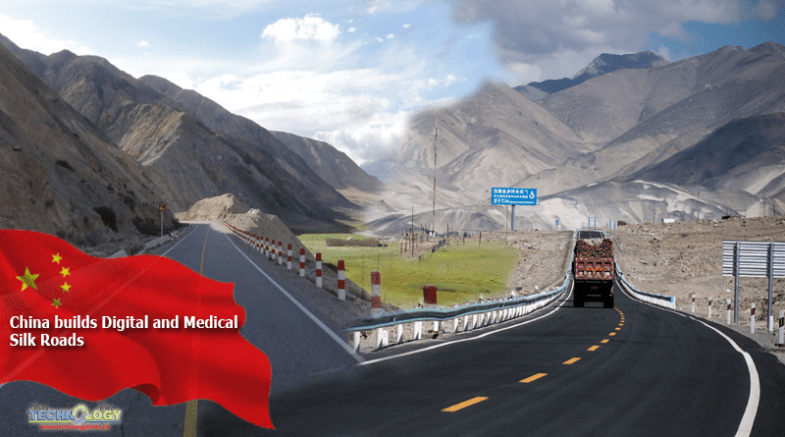China is focusing on non-physical components of the BRI
Many countries partnering in China’s Belt Roads Initiative are also experiencing severe economic slowdown, and have requested for debt relief. The global economy is projected to shrink by 3% this year and the cumulative loss of GDP over the next two years could be over $9 trillion. Most advanced economies are expected to contract by about 6%.
Meanwhile, in China which was the first epicentre of the COVID-19 pandemic, the economy GDP fell by 6.8% from a year ago — the country’s first economic contraction in decades. Many countries partnering in China’s Belt Road Initiative are also experiencing a severe economic slowdown, and have requested for debt relief.
The physical infrastructure component of the BRI (Physical BRI) has slowed because of the global pandemic, and participating countries have put infrastructure development and economic cooperation in the back burner.
Also Read: KP relaxes lockdown for construction sector industries
Lockdowns and factory closures, and the repurposing of manufacturing capabilities into medical production in some BRI host countries, have fractured vital supply chains including those supplying Chinese construction machinery and materials. BRI projects are predominantly dependent on Chinese rather than local materials.
Border closures and travel bans have also adversely affected the flow of labour, and equipment and materials to keep infrastructure projects going. Chinese migrant workers previously working on BRI projects have often been quarantined (Singapore), repatriated (Iran), or temporarily banned from entering the country (Indonesia).
Pakistan has put on hold the construction of special economic zones (SEZs) under the China-Pakistan Economic Corridor as Chinese companies struggle to cope with the rampant human and capital disruptions during COVID-19.
The development of Cambodia’s Sihanoukville SEZ is hit by a similar supply chain and labour-related issues. Physical BRI projects in Indonesia, Myanmar and Malaysia also suffer from delays and uncertainties due to the pandemic.
But the BRI is Chinese President Xi Jinping’s signature foreign and economic policy initiative and has been written into the constitution of the Communist Party of China, and it is not going to be abandoned. In fact, China has adopted a two-stage approach in reviving the BRI.
With the slowing of the Physical BRI, China is focusing on the non-physical components of the BRI, namely the Health Silk Road (HSR) and the Digital Silk Road (DSR). HSR and DSR have become the new brand names for BRI in the age of COVID-19.
Financing requirements for these two initiatives are less than for building large cross-border physical infrastructure. HSR is a term coined by President Xi during his visit to Geneva in January 2017 when he signed an MoU with the World Health Organization (WHO), committing that HSR would seek to improve public health among BRI partners.
The China-Europe Express Rail has been revived as travel bans choke much of the global air and sea transport. Freight trains connecting China and Europe are ferrying medicine, equipment and anti-epidemic supplies to countries across Eurasia including notably Italy.
Chinese companies implementing overseas BRI projects such as Huawei and Tencent have brought relief packages from China, the world’s biggest producer of medical kits, to fulfil their social responsibility to the locals.
Jack Ma donated $14 million to international efforts to develop a coronavirus vaccine and sent personal protective equipment (PPE) to Japan, the United States, Nepal and all 54 African nations. Some of the equipment from China has proved to be defective, but Beijing says it is trying to remedy the situation.
The Digital Silk Road is also expected to replace Physical BRI even as many countries doubled down on various Chinese digital solutions to combat COVID-19. China’s use Belt Roads of a colour-coded application for monitoring health of patients and contact tracing are cases in point.
Notwithstanding criticism surrounding civic liberty, the app is being replicated in Singapore which rolled out of ‘TraceTogether’. As COVID-19 transforms economies, it is accelerating the shift from retail to e-commerce. And with physical distancing measures likely to stay in place, economic activity and consumption patterns will go online and China’s DSR is set to rise in prominence.
Once the world reconnects and global Belt Roads health issues are resolved, China and BRI participating countries will once again restart the Physical BRI to build transportation networks, industrial parks and power plants across Asia, Europe, and Africa.
At the Second Belt and Road Summit in 2019 President Xi had acknowledged the criticism and pledged to reform the initiative with an emphasis on “high quality” green and clean Belt Roads infrastructure projects.
A number of studies have recommended policy agenda for both China and BRI participating countries to work towards an improved mechanism. One such is our forthcoming co-authored book entitled China’s Belt and Road Initiative: Impacts on Asia and Policy Agenda.
It makes 10 key policy recommendations to enhance the prospect of a successful and mutually beneficial BRI 2.0 to both China and participating countries:
- v Enhance BRI transparency
- v Strengthen economic and infrastructure governance
- v China should secure buy-ins of major powers
- v Multilateralise the BRI
- v Liberalise and facilitate trade
- v Manage public debt distress
- v Stakeholder countries should prepare national infrastructure strategies
- v Empower and protect local communities
- v Address transport network choke points and missing links
- v Transform transport corridors to economic corridors
The coronavirus crisis may thus provide a chance to revive and reform the BRI with its health and digital components.

